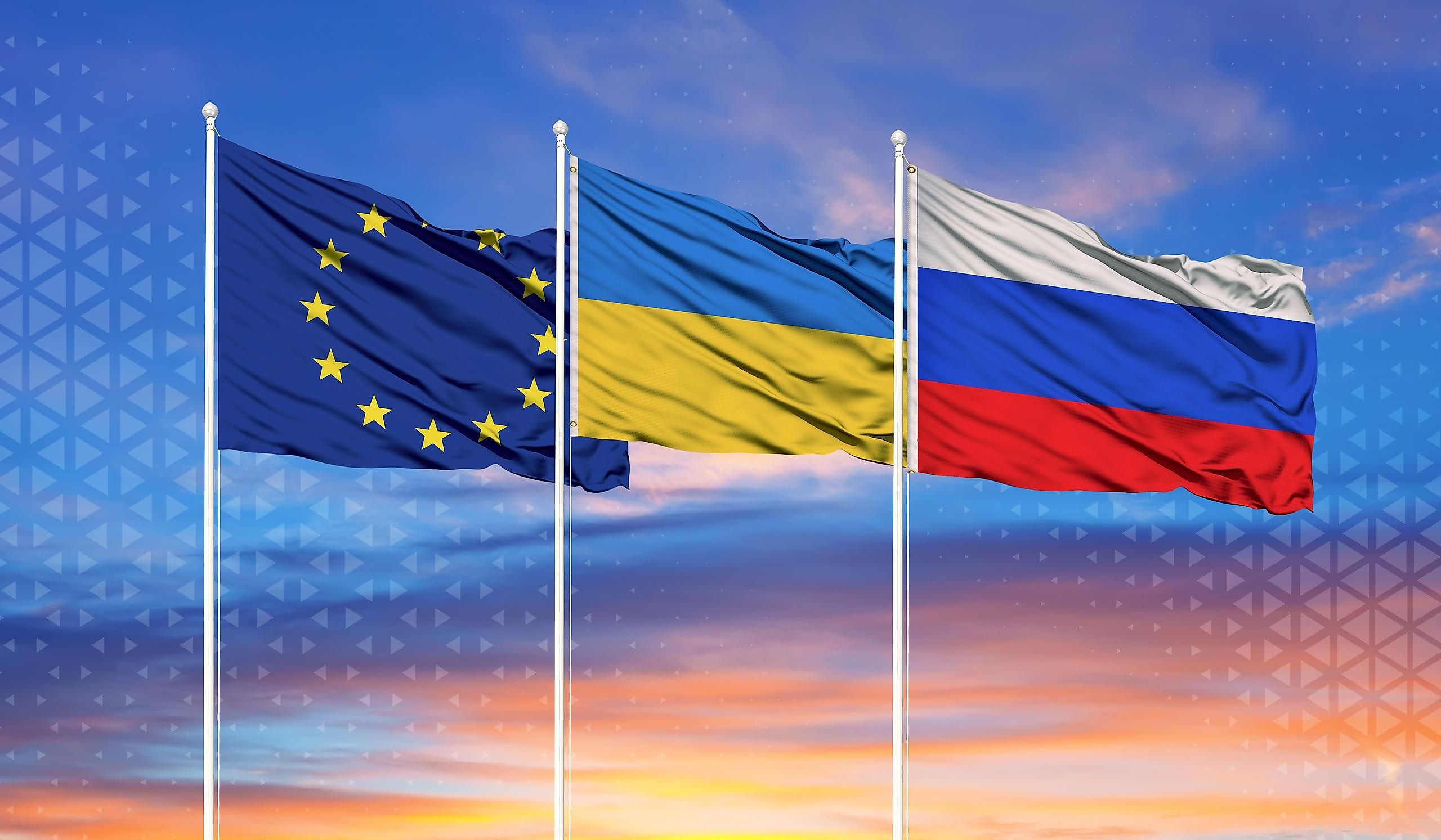
Ukraine's Quest for European Integration
In retrospect, it is simple to see the variables that contributed to the conflict between Russia and Ukraine. From the end of the 20th century to the present day, Ukraine's saga has been a progression of critical incidents. Events like the Declaration of Independence, the Orange Revolution, and demonstrations at Euromaidan are undeniably foundational in the Ukraine-Russia relationship. Yet, the history of this relationship extends much farther into the past, toward the 882 AD Kyivan Rus state, and when the Russian Empress Catherine annexed Crimea in 1783 AD. However, the momentum of certain events, beginning in the 1980s, escalated until the moment that Russia officially entered the ongoing war with Ukraine in 2022.
Gorbachev's Policies
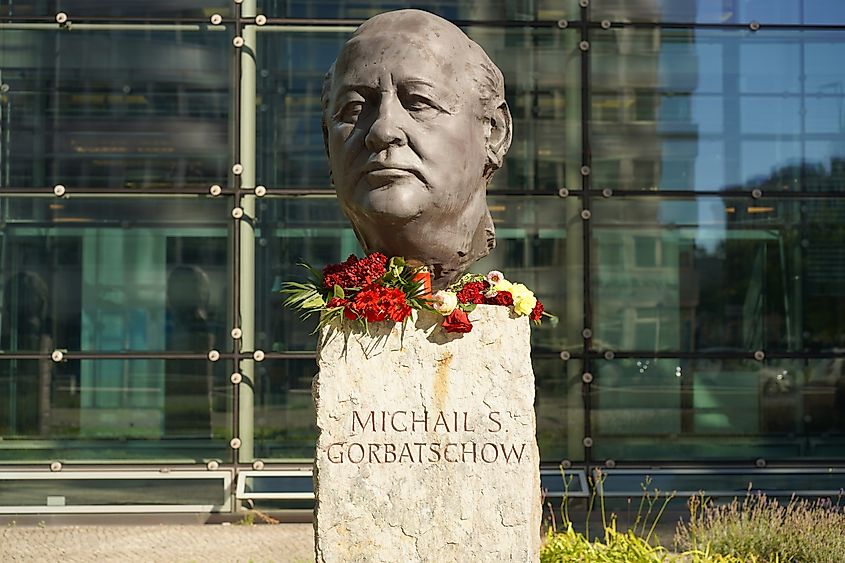
In 1985, Mikhail Gorbachev became the Communist Party's General Secretary in the Soviet Union.
His governing approach was different from previous Soviet rulers, allowing reforms and changes. These changes paved the way for the fall of the Soviet Union, unintentionally leading to the disentanglement from communism.
As thriving capitalist nations like Japan and Germany thrived, the Soviets felt pressure to keep pace. In the mid-80s, under Gorbachev's leadership, they introduced Perestroika - meaning restructuring in Russian.
Gorbachev wanted to do this through economic and political reforms while also reaching out to the West to warm their relationship. He also had aspirations to diversify the centralized economic blueprint within the Soviet financial system, giving individual enterprises more freedom and fostering a sense of personal proprietorship and enterprise.
At the same time, Gorbachev introduced political reforms to increase openness and transparency in the Soviet system, known as "glasnost." The media was given more freedom, and efforts to boost political diversity and democracy came into play.
The 1986 Chernobyl nuclear disaster underscored the push for more transparency and wider data sharing. Initially, though, there was a delay on the part of the Soviet government in fully uncovering details about this calamity - something that caused public skepticism and disapproval.
However, these changes were gradual, and conservatives within the Soviet establishment resisted.
Gorbachev also introduced elections with multiple candidates, marking a departure from the one-party system. In 1988, the Soviet Congress of People's Deputies was formed.
The question at the time was, could the Soviet Union even exist with these changes? If the fundamental essence of the Soviet Union was being changed, was the foundation strong enough to maintain itself?
At the same time this was happening in Russia, the Rukh movement grew in Ukraine. The Rukh movement, also known as the Popular Movement of Ukraine for Restructuring, was a political and social movement in Ukraine that played a significant role in the country's push for independence during the late years of the Soviet Union and the early post-Soviet period.
In juxtaposition to the Soviets' efforts at preserving union coherence, the Rukh movement stressed the cultural uniqueness of Ukraine.
The movement wanted the official use of the Ukrainian language, acknowledgment of Ukraine's past, and endorsement of local customs. They also wanted to turn Ukraine into a sovereign democratic nation.
Only a few years later, this dramatic demand would become a reality.
Declaration of Ukrainian Independence / USSR Dissolution
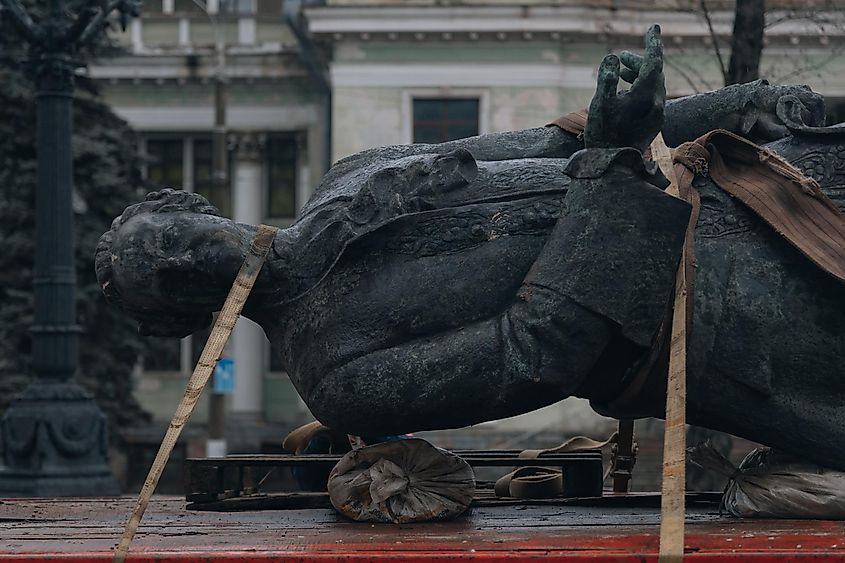
In July of 1990, the Ukrainians didn't just take a small step. They took a giant leap.
The Soviet Union was crumbling due to economic struggles and growing nationalistic movements within its republics. Gorbachev's reforms aimed to revitalize it but inadvertently loosened central control.
On July 16th, the Supreme Soviet of the Ukrainian SSR declared the sovereignty of Ukraine in a vote of 355 to 4.
The declaration said Ukraine had control of its lands, and its laws superseded any Soviet laws. They could also have their own army and currency.
The first shoe dropped in January of 1991. In Lithuania and Latvia, violent protests against Soviet rule started, and the Soviets sent in tanks to stop them.
At this point, hardliner Communist party members realized their time could be up. They tried one last-ditch attempt to resist a sudden change in power.
In August of 1991, they staged a coup. Gorbachev was kidnapped, and the army was ordered to suppress any rebellions. The army refused to attack their own people, and the coup came crashing down.
For Ukraine, the attempted coup was the last straw. Not even a week later, Ukraine proclaimed its independence.
The Ukrainian Declaration of Independence was created in response to the danger they felt due to the coup, saying that by declaring independence, they were "continuing the thousand-year tradition of state development in Ukraine."
The next step for Ukraine would be left up to its people. It would go down to a referendum.
On December 1st, Ukraine held an independence referendum. 84.18 percent of eligible voters turned up. 90.32 percent of them said yes to freedom.
The first president to be elected was Leonid Kravchuk, who would meet with both Russia and Belarus to sign the Belovezh Accords.
The Belovezh Accords signaled the end of the Soviet Union, putting in its place a successor body known as the Commonwealth of Independent States (CIS).
The CIS took shape as an informal coalition consisting of former Soviet territories striving to preserve economic and political connections while allowing the newly independent states greater sovereignty.
This marked the end of both the Cold War and the cessation of the Soviet Union's existence. It was yet another progression in Russia & Ukraine's intricate interrelations.
Crimea and Tension with Russia
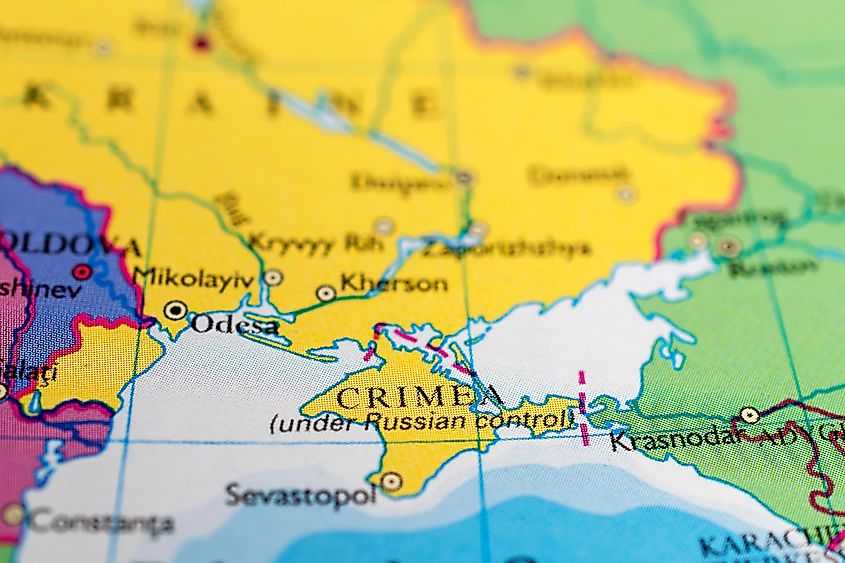
After all these years, Ukraine was finally a singular, united, and free country. No longer was it split between empires or part of a greater union. The newly founded country had to work to keep its territory intact soon after its creation.
Ukraine struggled with the problem of Crimea. Based on the results of the referendum, Crimea was a lot less enthusiastic about Ukraine's independence. Only 54 percent of voters in Crimea voted 'yes.'
Some in the Russian Federation openly promoted the idea of Crimea seceding from Ukraine. The Russian Foreign Ministry and members of the parliament started to condemn and question the legality of the 1954 Crimea transfer.
When Crimea was handed to Ukraine, it was impossible to predict the Soviet Union would fall apart. This proved challenging for numerous high-powered Russians who perceived Ukraine as an extension of greater Russia and struggled with its newfound independence.
Crimea has always been home to a heterogeneous population with lots of ethnic Russians. With Ukraine's newly gained autonomy, this Russian-speaking community found itself concerned about potential marginalization or bias.
During springtime and summertime in 1992, there were rounds upon rounds of political discussions among Crimean locals, Ukrainians, and their Russian counterparts, looking to find a resolution.
Russia and Ukraine were arguing over who would get the Black Sea Fleet and the city of Sevastopol, which held the naval base.
Soon after, legislators in Crimea changed the name of the area from Crimean ASSR to simply the Crimean Republic.
It started to look like Crimea could leave Ukraine. In May 1992, Crimea's parliament declared independence, pending a referendum. The Declaration of Independence was seen by some as an attempt to protect the rights and interests of the ethnic Russian population.
The Ukrainian parliament deemed it unconstitutional, issuing an ultimatum to rescind it by May 20th. Responding, Crimea took back its independence declaration but maintained the referendum would take place.
By June 1st, a compromise granted Crimea increased autonomy and special economic status, though Crimean Tatars criticized the deal for lack of representation in the talks.
By the time 1994 came, tensions were starting to ease. The Budapest Memorandum, signed in December, established a commitment to uphold Ukraine's post-Soviet borders. Unfortunately, one of the agreements, while moralistic, had severe consequences for Ukraine.
As part of the agreement, Ukraine agreed to transfer its sizable stockpile of Soviet-era nuclear weapons to Russia for decommissioning. One could easily contend that, had they maintained their nuclear arsenal, perhaps Russia might not have mustered the courage to invade in 2014 or 2022.
Reflecting back, it seemed as if Russian-Ukrainian relations were thawing. The Black Sea Fleet dispute was settled with a fair division, and Russia secured a lease for the port infrastructure in Sevastopol.
While the tensions were easing between nations, tensions between the peoples of Crimea remained hot over the 90s.
Fighting and conflict in the area was constant.
Sevastopol declared itself a Russian city in 1994, causing a dispute with Ukrainian authorities.
In 1995, protests in Simferopol advocated for Crimea's independence and opposed Ukrainian efforts against Crimean separatism. The Foreign Minister of Russia issued a stern warning that Russia stood ready to take forceful measures to defend ethnic Russians residing within previously Soviet-associated republics.
The situation in Crimea remained tense and on edge for the majority of the decade. Every few months, something would happen to raise tension in the region.
The Friendship, Cooperation, and Partnership Treaty signed back in 1997 underlined the position that Crimea was indeed a part of Ukraine.
Both Boris Yeltsin, Russia's president at the time, and Ukrainian President Leonid Kuchma greenlighted this agreement in Kyiv. The signing came after nearly six years of persuasion caused by prospective NATO membership for Ukraine.
The accord, while confirming the existing borders, marked a pivotal move towards genuine cooperation and security between the two independent nations.
The treaty states the two nations shall maintain the "strengthening of friendly relations, good-neighborliness, and mutually beneficial cooperation."
It also signified Ukraine's tenacity in the face of political and economic coercion from Russia, showcasing its dedication to preserving self-rule and liberty. It also hinted at a potential harmonious coexistence between both nations.
Article 1 of the treaty states that "as friendly, equal, and sovereign states . . . (Ukraine and Russia) shall base their relations upon mutual respect and trust, strategic partnership and cooperation."
The optimistic nature of the treaty would fade away in the next two decades.
Orange Revolution
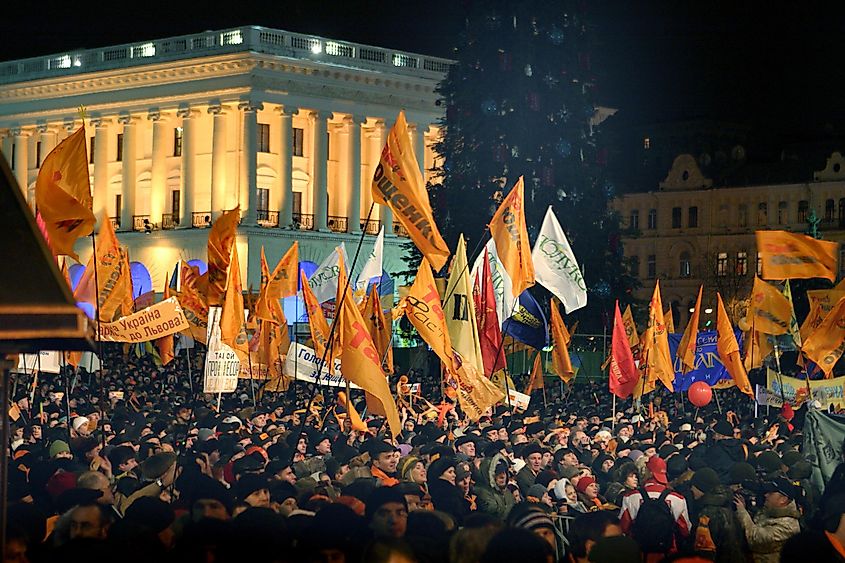
In 2004, Ukraine was preparing for a huge election. The competition lay between Viktor Yushchenko and Viktor Yanukovych. The former was seen as the pro-European choice, while Yanukovych was President Leonid Kuchma's pick to be his successor.
Back then, Kuchma was engulfed in a storm of corruption allegations. He faced accusations of fraudulent actions and misbehavior, inclusive of participation in the unlawful trade-off radar systems to Iraq that breached sanctions put in place by the United Nations.
Simultaneously, Kuchma was facing severe domestic criticism and international condemnation over accusations of authoritarianism and the suppression of media freedoms. Tapes came out which alleged his involvement in the kidnapping and murder of journalist Georgiy Gongadze.
He and others in his party were concerned about what would happen if Yushchenko won the election. They were worried about potential jail time.
In an unforeseen turn of events in September, the health condition of Yushchenko drastically worsened, and he was quickly transferred to a healthcare center. Tests revealed he was poisoned with dioxin.
Yushchenko leveled accusations at top Ukrainian officials, including President Kuchma. He considered them as culprits in the plot to end his life. Despite Yushchenko's hiatus from his campaign, he managed a return to the political fray before the election.
The initial voting stage for the election was held on October 31st. Yushchenko and Yanukovych both secured approximately forty percent of the total votes, leading to a run-off process.
That is when things got messier.
Yanukovych was announced victorious by the Central Election Commission amidst considerable accusations of electoral fraud, interference, and inconsistencies.
In the shade of orange, symbolic of Yushchenko's campaign, hundreds of thousands of people flooded Ukrainian streets. Individuals from diverse backgrounds marched with the peaceful protests taking place at Kyiv's Independence Square.
International monitors, including the Organization for Security and Co-operation in Europe (OSCE), voiced doubts regarding election integrity and process fairness.
Pressured by internal sentiments as well as from global side-lines counterbalanced with relentless protesting led to a decision: new presidential elections were announced.
The re-run was seen as fair, and this time, Viktor Yushchenko was declared the winner. The Orange Revolution marked a change in Ukrainian politics, showing a wish for democratic changes and a closer connection with Western values.
Even though Russia supported Yanukovych, they accepted the results of the second run-off and reestablished relations with Ukraine.
This would not be the last time Yanukovych would appear in the history of Ukraine's politics.
Euromaidan Protests
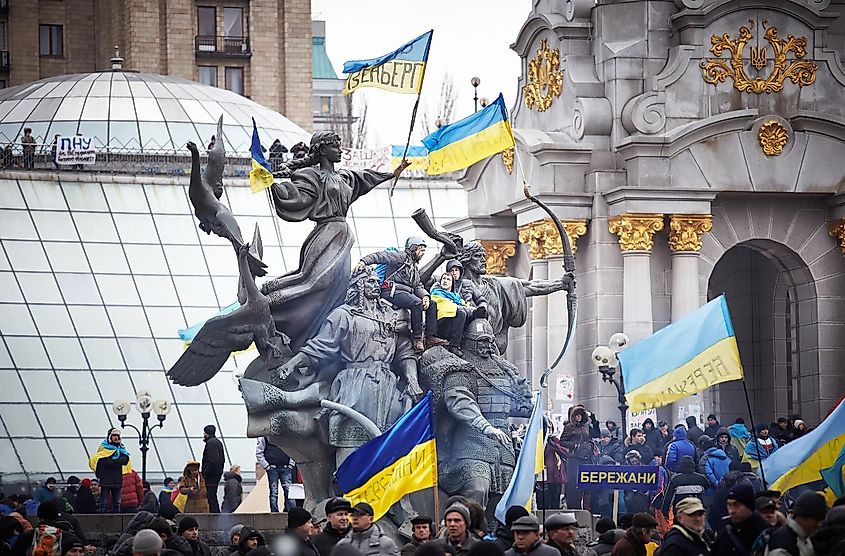
While the lingering echoes of the Orange Revolution were still audible in Ukraine's political sphere, the country again stood at a significant junction."
After the Orange Revolution, the difficult relationship between Ukraine and Russia played out on multiple fronts. There were gas disputes that left Europe shivering during winter, as well as the complex political drama involving figures like Yulia Tymoshenko.
Ukraine faced several natural gas disputes with Russia during this period. Disputes over gas prices and unresolved dues in 2006 and 2009 led to complications with Europe's provision of natural gas.
In 2009, Ukraine's Prime Minister Yulia Tymoshenko inked the "Kharkiv agreements" with Russia.
This allowed an extension of tenancy for Russia's Black Sea Fleet in Crimea and reduced natural gas charges for Ukraine. However, this agreement stirred controversy as opponents blamed Tymoshenko for inflicting financial damage on her country.
In the 2010 presidential election, Yanukovych was officially back after being elected as the President of Ukraine. His victory marked a huge political comeback. Before he took power, Ukraine had been in the midst of negotiations with the European Union for something named an Associated Agreement.
Often, this is seen as taking one step closer to becoming a full member of the European Union. By October 2013, negotiations were getting close to being finished. Vladimir Putin decided to change the direction of the negotiations.
Putin and the Kremlin, in response, started a trade war with Ukraine, hitting them with hundreds of food export sanctions. A month later, Yanukovych announced the deal with the European Union was off. Instead, talks with Russia would take place.
Reacting to this, tens of thousands amassed in Kyiv's Independence Square to protest on November 21st. For seven days, peace prevailed amidst the protests.
When it became clear Yanukovych had no intention of changing direction and signing the agreement with the E.U., things got worse.
On November 30th, riot units fought with protestors, resulting in about 79 injured. After the media published photos of the violent attack on protestors, it was not just Kyiv that started to protest; it was all over Ukraine. People wanted prosecutions of officials and the impeachment of the president. As protests ramped up, six events had a total of 100,000 people coming out.
Clashes with police continued. In an attempt to discourage assemblies, the Ukrainian authorities introduced certain legislative measures. Despite this, they were unsuccessful as the protests kept going on. On January 22nd, two protestors were killed. People from hospitals were kidnapped. In response, administration buildings around Ukraine were occupied by protestors.
Violence continued. The prime minister quit and left the country, but President Yanukovych remained. In February, Euromaidan leaders marched on parliament and were fought off by police. Dozens on both sides died.
Finally, on February 21st, Yanukovych and other ministers fled Ukraine. After Yanukovych took off, they set up fresh elections in May.
Petro Poroshenko emerged victorious in the Ukrainian presidential race. Yet, around the same time, a profoundly more pressing issue arose.
Annexation of Crimea
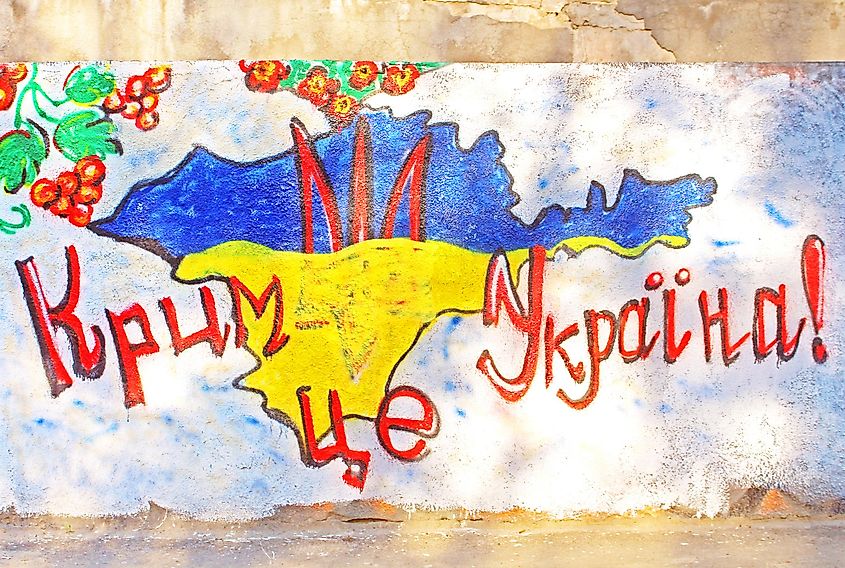
In April 2010, Yanukovych and Russian leader Dmitry Medvedev inked a pact. The agreement extended Russia's lease on naval stations situated in Crimea for 25 years.
Four years later, the situation between the two countries changed dramatically.
The bigger, more terrible part of the war between Russia and Ukraine started on February 24th, 2022. But the fighting between these two countries actually began earlier, on February 20th, 2014.
The situation exploded on the 27th.
Unarmed individuals infiltrated the Crimean parliament, pushing for a special session to determine the region's fate.
Amid uncertain conditions and claims of inadequate attendance, representatives went ahead to approve an all-encompassing Crimean referendum for increased self-rule.
Following this, armed forces seized control of strategic sites, revealing a coordinated, Russian-led military operation.
Despite claims by top Russian officials disavowing involvement, evidence suggested the opposite. The subsequent annexation of Crimea drew widespread international condemnation, triggering enduring geopolitical repercussions.
Armed men broke into the parliament, and there was a vote to hold a referendum to decide Crimea's future. The pro-Ukraine prime minister was relieved of his duties, and a pro-Russia replacement was installed. A Russian flag was raised over parliament.
Soon after, Russia acknowledged they moved in troops to protect the Russian citizens in the area.
The public referendum was to be held on March 16th. The referendum offered two options: reunification with Russia or the restoration of the 1992 Crimean constitution, which would grant Crimea significant autonomy within Ukraine.
The vote resulted in an overwhelming majority of Crimean residents supporting reunification with Russia. The final results showed 97 percent of voters wanted to join Russia, although the conditions of the voting procedure are questionable. Unlabeled and unidentified armed troops were spotted frequenting voting venues and strategic points in Crimea amidst the balloting period. These armed individuals were widely believed to be Russian soldiers, and their presence raised concerns about the fairness and legitimacy of the referendum. Ukraine and the international community said it was intimidation and coercion, influencing votes.
Russian President Vladimir Putin officially recognized Crimea as part of Russia on March 18th, 2014. Following the annexation of Crimea, pro-Russian separatist movements erupted in parts of Eastern Ukraine.
In April 2014, leaders of the separatist factions in Donetsk and Luhansk announced independence for their respective territories, but no one in the international community acknowledged it as legitimate.
The Ukrainian government started diplomatic talks with the pro-Russian dissenters, and the Minsk I agreement was signed on September 5th, 2014. The resolution urged for an instantaneous cessation of fighting between Ukraine's national army and pro-Russian forces.
A key clause within this pact involved both sides having to pull back heavy artillery from the frontlines, aiming to form a boundary zone that would act as a deterrent against further combat or skirmishes.
Minsk II was signed the next year and tried to reinforce the ceasefire and resolve the challenges that still existed.
Its framework outlined plans for local elections to take place in the Donetsk and Luhansk areas, as dictated by Ukrainian legislation. Minsk II underscored the need for constitutional amendments within Ukraine—emphasizing decentralization and championing increased independence for the Donetsk and Luhansk provinces.
Any sort of peace would not last a decade. In late fall and early winter of 2021, Russia began gathering troops on the border with Ukraine while simultaneously sending troops to Belarus.
Putin and Russia were just too worried about a world where Ukraine was part of NATO. If Ukraine joined NATO, that would leave NATO bordering Russia.
In response to Ukraine refusing demands from Russia that would prohibit them from joining NATO, Putin acknowledged the independence of Donetsk and Luhansk. Russian troops crossed over the border. On February 24th, 2022, in words that are now infamous, Putin told his country and the world that a "special military operation" was underway.
Explosions could be heard across major Ukrainian cities as rockets rained down. The Ukraine-Russia war was no longer contained in Crimea. The invasion of Ukraine by Russia had truly begun.
Final Thoughts
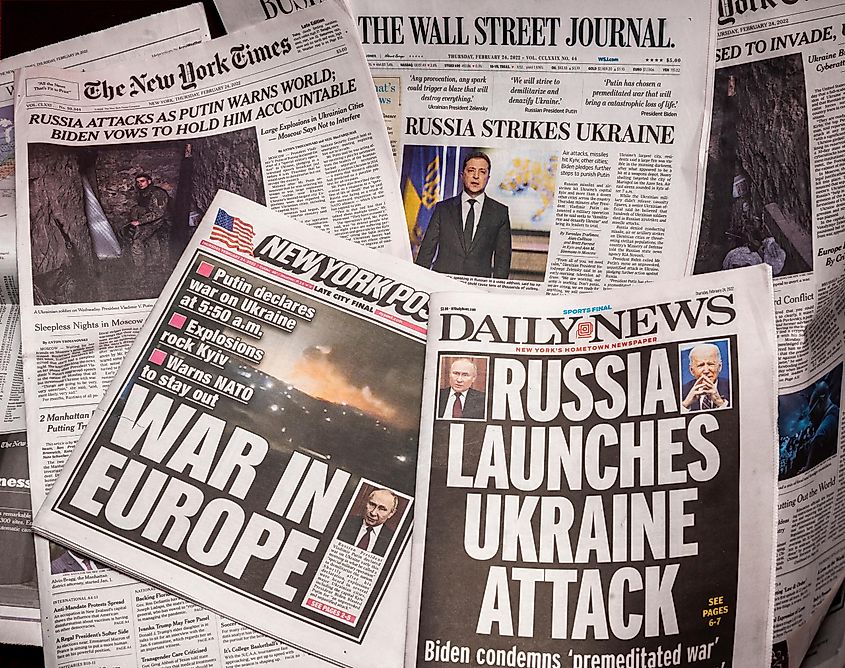
Since Ukraine's independence, many events have been incredibly critical to the ongoing fight, creating a clear connection.
What if Ukraine never gave up its nuclear weapons? What if they had pushed for NATO entry earlier? We can go back even further.
What if Catherine had never conquered Crimea, and what if Soviet Russia had never gifted Crimea to Ukraine? Rhetorical questions can feel pointless, but we need to pose questions as they help in figuring out the journey here.
From Gorbachev's policies to the Orange Revolution, the last few decades dramatically changed the relationship between Ukraine and Russia.
As Ukraine faces the 21st century, relations with Russia are as bad as they have ever been.
Ukraine's tale is intimately linked with its relationship with Russia, highlighting the struggle to maintain independence in facing constant hurdles. Their saga continues, and how future relations between Ukraine and Russia will unfold remains untold.
The story is far from over, and how Ukraine and Russia navigate their future together seems to be changing every day. What the world can hope for is that a resolution is found and the two people who were once part of the same Kyivan Rus can find a common peace.
Works Cited:
Bebler, Anton. "Crimea and the Ukrainian-Russian Conflict." "Frozen Conflicts" in Europe, edited by Anton Bebler, 1st ed., Verlag Barbara Budrich, 2015, pp. 189–208. JSTOR, https://www.jstor.org/stable/j.ctvdf0bmg.22
"Center for European Studies, University of North Carolina at Chapel Hill. 'The Fall of the Soviet Union.' UNC-Chapel Hill Center for European Studies, https://europe.unc.edu/iron-curtain/history/the-fall-of-the-soviet-union/."
Charron, Austin. "Whose Is Crimea? Contested Sovereignty and Regional Identity." Region, vol. 5, no. 2, 2016, pp. 225–56. JSTOR, https://www.jstor.org/stable/24896628.
Charques, R.D. Between East and West: The Origins of Modern Russia: 862 - 1953. Pegasus Books, 1956.
Diuk, Nadia. "EUROMAIDAN: Ukraine's Self-Organizing Revolution." World Affairs, vol. 176, no. 6, 2014, pp. 9–16. JSTOR, https://www.jstor.org/stable/43555086.
Gaidar, Yegor. Collapse Of An Empire: Lessons For Modern Russia. Translated by Antonina W. Bouis, 1st ed., Brookings Institution Press, 2007.
Gladun, Andrii. "Impact of Repression on Mobilization: The Case of the Euromaidan Protests in Ukraine." Social Justice, vol. 46, no. 2/3 (156), 2019, pp. 29–50. JSTOR, https://www.jstor.org/stable/26952572. Accessed December 11th, 2023.
Herd, Graeme P. "Russia and the 'Orange Revolution': Response, Rhetoric, Reality?" Connections, vol. 4, no. 2, 2005, pp. 15–28. JSTOR, https://www.jstor.org/stable/26323167
Harasymiw, Bohdan. "Declaration on the State Sovereignty of Ukraine" Internet Encyclopedia of Ukraine, 2023,https://www.encyclopediaofukraine.com/display.asp?linkpath=pages%5CD%5CE%5CDeclarationontheStateSovereigntyofUkraine.htm
Hosking, Geoffrey. Russian History: A Very Short Introduction. 1st ed., Oxford University Press, 2012.
Karatnycky, Adrian. "Ukraine's Orange Revolution." Foreign Affairs, vol. 84, no. 2, 2005, pp. 35–52. JSTOR, https://doi.org/10.2307/20034274.
Kuzio, Taras, Ukraine's 2004 Presidential Election: The Orange Revolution, https://ciaotest.cc.columbia.edu/olj/et/et_v12n4/et_v12n4_003.pdf
Kuzio, Taras, and Andrew Wilson. Ukraine: Perestroika to Independence. Macmillan, 1994.
Office of the Historian, Foreign Service Institute, United States Department of State. 'The Collapse of the Soviet Union.' U.S. Department of State, https://history.state.gov/milestones/1989-1992/collapse-soviet-union.
Plokhy, Serhii. The Gates of Europe: A History of Ukraine. 2nd ed., Basic Books, 2022.
Plokhy, Serhii. Lost Kingdom: The Question For Empire and the Making of the Russian Nation. 1st ed., Basic Books, 2017.
Reid, Anna. Borderland: A Journey Through the History of Ukraine. 2nd ed., Basic Books: Member of The Perseus Book Group, 2014.
"Russia's Real Aims in Crimea." Carnegie Endowment for International Peace, March 13th, 2014, https://carnegieendowment.org/2014/03/13/russia-s-real-aims-in-crimea-pub-54914.
"Seventeen Moments in Soviet History, Michigan State University. 'Ukrainian Independence Referendum.' Seventeen Moments in Soviet History, https://soviethistory.msu.edu/1991-2/the-end-of-the-soviet-union/the-end-of-the-soviet-union-texts/ukrainian-independence-declaration/."
Sorokowski, Andrew D. "Treaty on Friendship, Cooperation, and Partnership between Ukraine and the Russian Federation." Harvard Ukrainian Studies, vol. 20, 1996, pp. 319–29. JSTOR, https://www.jstor.org/stable/41036701.
"Treaty on Friendship, Cooperation and Partnership between Ukraine and the Russian Federation." United Nations Treaty Series, United Nations. May 5th, 1997, https://treaties.un.org/Pages/showDetails.aspx?objid=08000002803e6fae.The Editors of Encyclopaedia Britannica. "The Russian invasion of Ukraine" Encyclopedia Britannica, 2023, https://www.britannica.com/place/Ukraine/The-Russian-invasion-of-Ukraine
Ukrainian Canadian Congress Manitoba Provincial Council. 'The Act of Declaration of Independence of Ukraine.' UCC Manitoba, 2020, https://uccmanitoba.ca/2020/07/the-act-of-declaration-of-independence-of-ukraine/."
Verkhovna Rada of the Ukrainian SSR. "On Declaration of Independence of Ukraine." Vidomosti Verkhovnoyi Rady (VVR), no. 38, 1991, p. 502. Permanent Court of Arbitration, https://files.pca-cpa.org/pcadocs/ua-ru/06.%20RU%20Hearing%20Exhibits/RU-89.pdf.
Wilson, Andrew. The Ukrainians: Unexpected Nation. 4th ed., Yale University Press, 2015.
Wydra, Doris. "The Crimea Conundrum: The Tug of War Between Russia and Ukraine on the Questions of Autonomy and Self-Determination." International Journal on Minority and Group Rights, vol. 10, no. 2, 2003, pp. 111–30. JSTOR, https://www.jstor.org/stable/24675066.
Yekelchyk, Serhy. Ukraine: What Everyone Needs To Know. 2nd ed., Oxford University Press, 2020.











